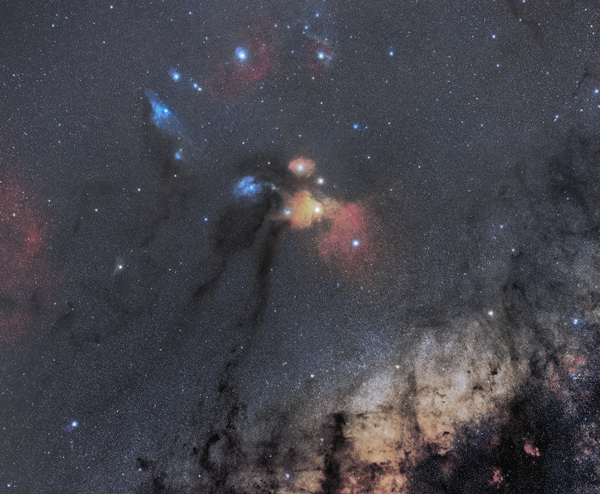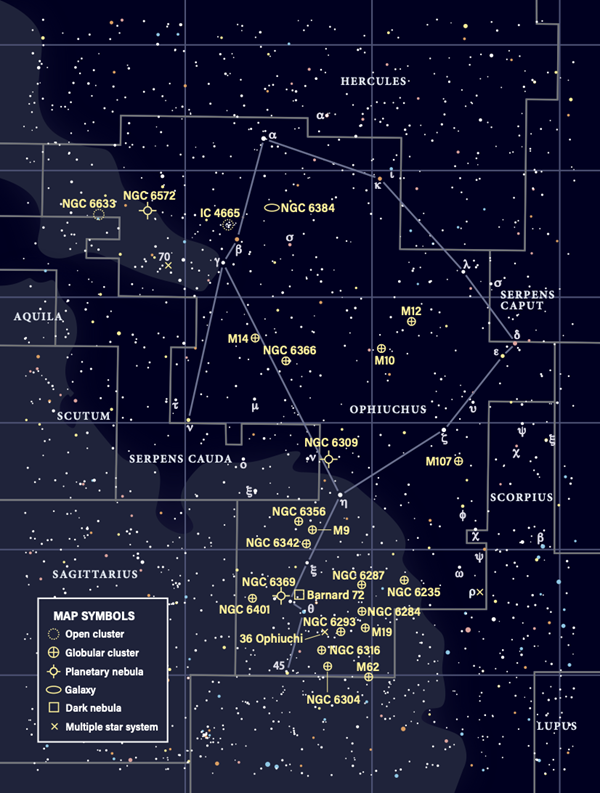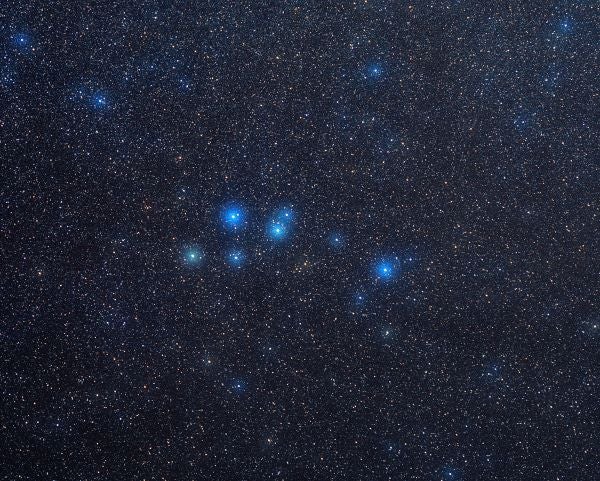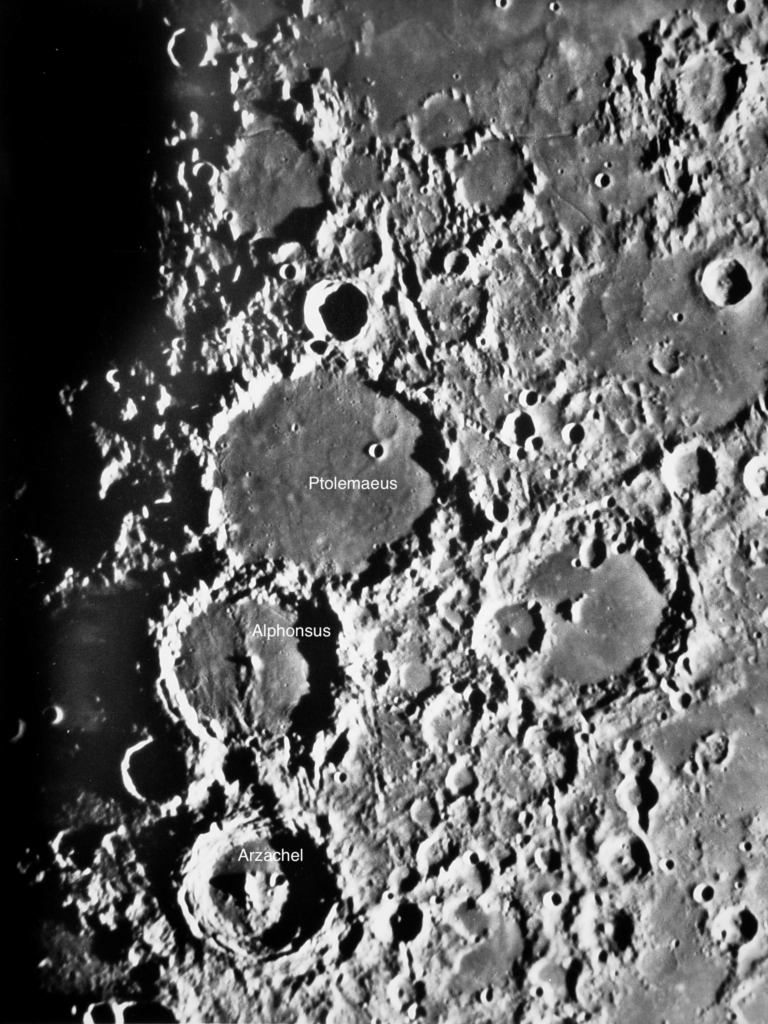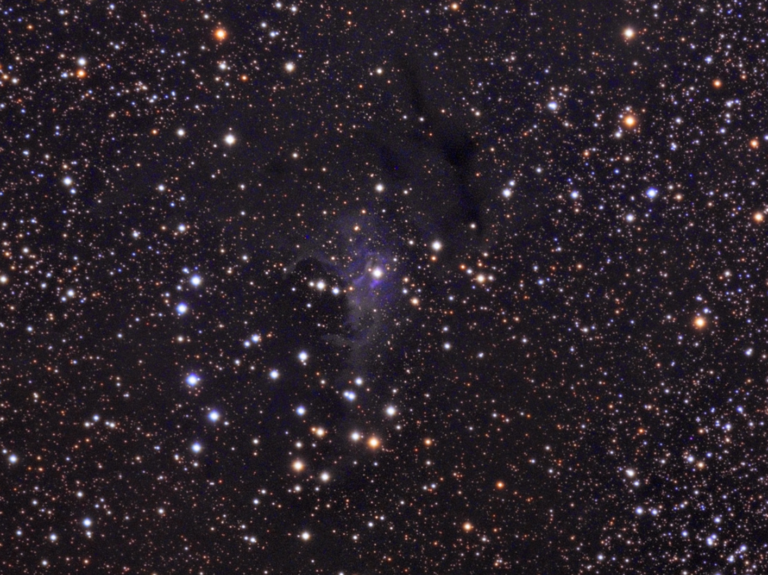The constellation Ophiuchus (pronounced off-ee-OO-cuss) the Serpent-bearer isn’t all that easy to pick out, primarily because of its large size and the relative dimness of its brightest star, Rasalhague (Alpha [α] Ophiuchi). This giant white star emits about 25 times the light of the Sun, but sits some 50 light-years away, so it glows at magnitude 2.1 — just slightly fainter than Polaris (Alpha Ursae Minoris). That makes it the 56th-brightest nighttime star. Only four other stars in Ophiuchus make the list of the top 200 brightest stars in the sky: magnitude 2.4 Sabik (Eta [η] Ophiuchi) is the 83rd brightest; magnitude 2.6 Zeta (ζ) Ophiuchi is 95th; magnitude 2.7 Yed Prior (Delta [δ] Ophiuchi) is 115th; and magnitude 2.8 Cebalrai (Beta [β] Ophiuchi) is 122nd.
The Serpent-bearer ranks 11th in size out of 88 constellations, covering 948.34 square degrees (2.3 percent) of the sky. Ophiuchus is visible in the evening from late spring through early autumn in the Northern Hemisphere, and its center lies at right ascension 17h20m and declination –8º. The best date each year to see Ophiuchus is June 11, when it stands opposite the Sun in the sky, reaching its highest point at local midnight. With respect to visibility, anyone living north of latitude –76° and south of latitude 60° can view the entire figure at some point during the year. And because it lies near the celestial equator, portions of Ophiuchus are visible worldwide.
The Serpent-bearer contains seven Messier objects — all globular clusters — as well as many other non-Messier globulars. Apart from those, it features three nice planetary nebulae, several worthy open clusters, and even a spiral galaxy. The last is a surprise because this star figure lies along the Milky Way, which normally blocks the light from objects such as distant galaxies.
Get comfortable, take your time, and enjoy your trek through this remarkable region of sky. Good luck!

